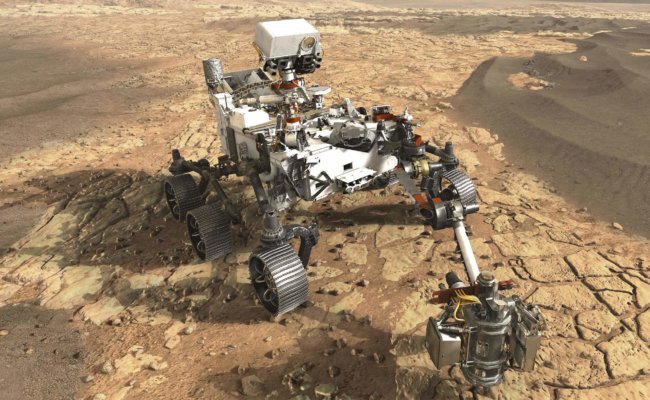
According to the plans of space Agency NASA, the next Mars Rover will travel to Mars in July 2020. The machine is still in production, but the NASA employees periodically publish information that shed light on how he eventually will be. As yet unnamed Rover will be literally stuffed to the eyeballs with modern equipment and new technologies. One only new cameras are worth.
The Rover developed by the staff Jet Propulsion Laboratory in Pasadena, California. While the machine is codenamed Mars 2020, but later the developers plan to come up with a more friendly and memorable name, as was the case with Curiosity. Like its predecessor, Mars 2020 will surf of Mars in search of life, as well as to study the Martian soil, atmosphere and natural phenomena. And for that the Rover will be a lot of new useful devices.

The Rover will be equipped with 23 different cameras and this was 6 more than the Curiosity. Nine cameras will perform engineering tasks, seven scientific, and the remaining 7 will track the process of moving Mars 2020 on the surface of the planet. During the descent of the Rover on the planet’s surface, the camera will track the process of opening the parachute. These “eyes” will allow the Rover to create a panorama of the red planet in high resolution, quickly detect obstacles, and explore the surface in great detail. Of course, all the cameras will work closely with other scientific equipment.
Have Curiosity have a camera Mastcam and Mars 2020 will have a new generation instrument called Mastcam Z, where “Z” stands for “zoom”. All the cameras will provide wider color gamut, and the data obtained, scientists will be able to recreate the Martian landscape in full 3D. This will be achieved thanks to the support of cameras of the stereoscopic images that, among other things, will allow the Rover to accurately estimate the distance to objects. In the case of previous Mars Rover cameras Navcam and Hazcam allowed to navigate and avoid hazards in its path. They had a resolution of 1 megapixel, and were equipped with black-and-white matrix. In the new generation cameras used 20 megapixel full color matrix. They will also be equipped with a system that reduces the blur of motion, and wide angle lenses.

Someone will say that’s not such a big deal – to improve the camera. Won some today matrix in modern smartphones are. But in the case of the Rover, which is millions of kilometers from Earth, a similar improvement of the equipment and ensuring its smooth operation in the harsh environment of the alien planet is really a difficult task. Besides, NASA scientists have developed a new data compression protocols to efficiently transmit photographs to Earth.
Mars 2020 will of course be equipped with not only cameras. New scientific equipment includes x-ray fluorescence spectrometer for studies of Martian soil, a new radar installation, microphone, UV-spectrometer and even a small drone-scout Helicopter Scout Mars, powered by built-in solar panels. The Rover boasts a more durable wheels (we all remember how badly damaged the wheels of the Curiosity of unfriendly Martian soil), increased power and performance.
One of the objectives of Mars 2020 will attempt to produce oxygen from the Martian atmosphere, which mostly consists of carbon dioxide. This experiment is very important in anticipation of sending humans to Mars. As for the landing site of the Rover here at NASA yet there is no consensus. There is a list of several suitable locations, but so far scientists have not chosen any of them. In any case, watch for this mission will be incredibly interesting. Just have to wait for 2020 and see with your own eyes.
New NASA Rover will become a work of engineering art
Sergey Grey